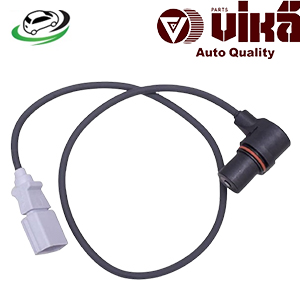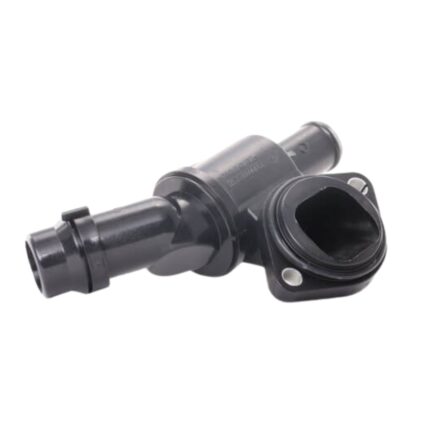Get AUDI B5 A4 1.8T / VW Passat B5 4 Motion 1.8T/ Passat B5 FWD 1.8T Alternator Belt 06B903137E
The alternator belt, often referred to as the serpentine belt or drive belt, is a crucial component in modern vehicles. It plays a vital role in the operation of the alternator, which is responsible for generating electrical power to charge the battery and power the electrical systems while the engine is running. This comprehensive guide will explore the function of the alternator belt, its benefits, common issues, and maintenance tips to ensure optimal performance and longevity.
What is an Alternator Belt?
The alternator belt is a rubber belt that connects the engine’s crankshaft to the alternator, as well as other components such as the power steering pump, air conditioning compressor, and water pump, depending on the vehicle’s design. In most modern vehicles, the alternator belt is a serpentine belt, meaning it is a single, continuous loop that winds around multiple pulleys. This design is more efficient and compact compared to older systems that used multiple V-belts.
Function of the Alternator Belt
- Power Generation
The primary function of the alternator belt is to drive the alternator, which converts mechanical energy from the engine into electrical energy. As the engine runs, the crankshaft turns the alternator belt, which in turn rotates the alternator’s rotor. This movement generates alternating current (AC), which is then converted into direct current (DC) to charge the vehicle’s battery and power the electrical systems. - Accessory Drive
In addition to driving the alternator, the serpentine belt also powers other engine accessories. Depending on the vehicle, these accessories may include:- Power Steering Pump: Assists in steering the vehicle by providing hydraulic pressure.
- Air Conditioning Compressor: Circulates refrigerant through the A/C system, allowing for cabin cooling.
- Water Pump: Circulates coolant through the engine and radiator to regulate temperature.
- Maintaining System Efficiency
The alternator belt helps maintain the efficiency of the engine’s accessory systems. A properly tensioned and aligned belt ensures that all accessories operate smoothly and efficiently, contributing to overall vehicle performance.
Benefits of a Well-Functioning Alternator Belt
- Reliable Electrical Power
A functioning alternator belt ensures that the alternator generates sufficient electrical power to keep the battery charged and supply power to all electrical systems. This reliability is essential for starting the vehicle and operating components such as lights, radios, and navigation systems. - Improved Engine Performance
By efficiently driving the alternator and other accessories, a properly functioning alternator belt contributes to optimal engine performance. A worn or slipping belt can lead to poor performance, reduced acceleration, and increased fuel consumption. - Reduced Risk of Breakdown
Regular maintenance of the alternator belt can prevent unexpected breakdowns. A well-maintained belt is less likely to break or slip, ensuring that the engine accessories operate as intended. - Lower Maintenance Costs
By keeping the alternator belt in good condition, vehicle owners can avoid costly repairs associated with a failing belt, such as damage to the alternator, battery, or other engine components.
Common Symptoms of a Worn or Failing Alternator Belt
- Squeaking or Squealing Noises
A worn or loose alternator belt may produce high-pitched squeaking or squealing sounds, especially during engine startup or acceleration. This noise is often caused by the belt slipping on the pulleys. - Battery Warning Light
If the alternator belt is failing, it may not drive the alternator effectively, leading to insufficient electrical power. This can trigger the battery warning light on the dashboard, indicating a charging issue. - Poor Electrical Performance
Dimming headlights, weak battery performance, or malfunctioning electrical accessories may indicate a problem with the alternator belt. Insufficient power from the alternator can affect the overall performance of the vehicle’s electrical systems. - Visible Wear and Damage
Regular visual inspections of the alternator belt can reveal signs of wear, such as cracks, fraying, or missing pieces. These visible issues can compromise the belt’s effectiveness and should be addressed immediately. - Overheating Engine
In some cases, a failing alternator belt may cause the water pump to malfunction, leading to engine overheating. If the water pump cannot circulate coolant effectively, the engine may overheat, resulting in potential damage.
Types of Alternator Belts
- Serpentine Belt
The serpentine belt is a single, continuous belt that drives multiple accessories. This design is common in modern vehicles due to its simplicity, efficiency, and reduced space requirements. - V-Belt
Older vehicles often used V-belts, which are shorter belts that drive individual accessories. V-belts require more space and are less efficient than serpentine belts, making them less common in newer vehicles.
Maintenance Tips for Alternator Belts
- Regular Inspections
Periodically inspect the alternator belt for signs of wear, such as cracks, fraying, or glazing (a shiny surface). If any damage is visible, the belt should be replaced. - Check Tension
Proper tension is crucial for the alternator belt’s performance. A loose belt may slip, while an overly tight belt can put stress on the pulleys and bearings. Most vehicles have a tensioner that maintains proper tension; however, it’s essential to check its condition during inspections. - Listen for Noises
Pay attention to any unusual noises coming from the engine compartment, particularly during startup or acceleration. Squeaking or squealing sounds may indicate that the alternator belt is worn or loose. - Monitor Electrical Performance
Keep an eye on the vehicle’s electrical systems. If you notice any dimming lights or electrical accessories that are not functioning properly, have the alternator belt and charging system checked. - Replace as Needed
Most manufacturers recommend replacing the alternator belt every 60,000 to 100,000 miles, but this can vary based on driving conditions and vehicle usage. Always refer to the owner’s manual for specific recommendations. - Use Quality Parts
When replacing the alternator belt, choose high-quality OEM (original equipment manufacturer) or reputable aftermarket parts. Quality belts are more likely to withstand wear and provide reliable performance.
Conclusion
The alternator belt is a vital component of a vehicle’s engine system, ensuring the efficient operation of the alternator and other accessories. Regular maintenance, timely inspections, and prompt replacement of worn or damaged belts can prevent electrical issues, engine overheating, and costly repairs. By understanding the function and importance of the alternator belt, vehicle owners can take proactive steps to maintain their vehicles, ensuring reliable performance and longevity.
Follow us on Facebook for more parts.




Reviews
Clear filtersThere are no reviews yet.